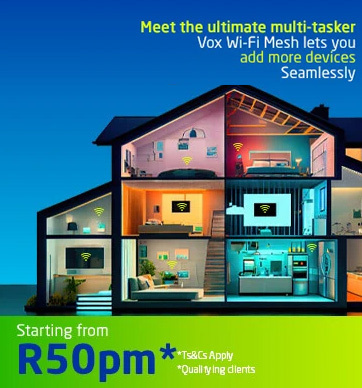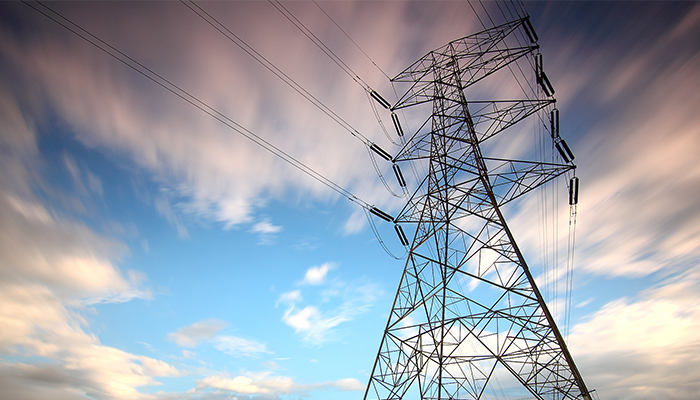The power utility has the means for a new income stream that would also take the country into the fourth industrial revolution
Eskom, which is going to cost the government R150bn over the next decade, is cited as the single-biggest threat to SA’s fortunes. However, with some creativity the power utility could take fast internet to the masses. It is sitting on a fibre gold mine.
While the public has every right to be angry and demand accountability for the malaise of the state-owned enterprise as it directly affects all our fortunes, there is an opportunity that simply cannot be ignored. As the discussions focus on the utility’s unbundling and turnaround strategy, it would be useful for all stakeholders, from the president and public enterprises ministry to the decision-makers at Eskom, to consider a different revenue stream.
On every Eskom (and Transnet) power line there is a duct with core fibre strands in it. Two years ago Eskom brought in Deloitte to conduct studies, and then approached internet service providers (ISPs) and asked whether they would be interested in taking the capacity if Eskom were to sell it. The response from us ISPs was an obvious yes, because their fibre contains unlimited capacity and speaks to our strategy of broad connectivity.
For instance, placing fibre in a remote Northern Cape town is the easy part, but the infrastructure cost to get there kills the business case before you even dig up the first pavement. The result? The town remains neglected. Yet here, in front of everyone’s eyes, is the solution. Many residents in these small towns only use the internet for basic services such as limited internet searches and social media. There is no streaming and no over-the-top offerings. Imagine turning this on its head: you “fibre up” the town and suddenly it goes from best-effort basic services to having the capability to leverage enterprise resource planning and customer relationship management in the cloud — in fact, just about any cloud-based services.
It’s not only connectivity that is improved. Education is enhanced, as is business efficiency and service delivery. Infrastructure that has been built up over generations is there, ready to be used. It provides immense potential for new revenue streams, but to date the report with such socioeconomic potential doesn’t appear to have caught the attention of the executive management at Eskom, the public enterprises ministry or the president.
There is research that draws a direct correlation between having people connected to the internet and the GDP growth of an economy.
With some creativity Eskom could take fast internet to the masses. It is sitting on a fibre gold mine.
That isn’t overly surprising; the utility is in survival mode. But the business case surely deserves consideration. The asset doesn’t need to be sold, and we all know how contentious that topic is. It could be leased over a period of time. New revenue streams would be made possible and the economic potential that could be unleashed is immense.
There is research that draws a direct correlation between having people connected to the internet and the GDP growth of an economy. The fourth industrial revolution presents an opportunity to fast-track SA’s development and improve the lives of its citizens. Of critical importance in this instance is that we have a golden opportunity to bring fast, cost-effective connectivity to the masses.
People who have never been connected to the internet before will be online. Industry is increasingly moving to the cloud, and unless businesses are connected they will become restricted in what they can achieve and remain uncompetitive.
In addition to harnessing the power of the fibre contained in the Eskom (and Transnet) infrastructure, ISPs look forward to the government moving on the release of 5G spectrum. But the load requirement as mobile connectivity continues expanding is growing exponentially. For us to keep up with these demands and increasingly data-intensive applications we simply have to have access to 5G.
Companies such as ours that have 5G as part of their strategic plans are watching with interest to see how the spectrum allocation eventually happens, because ultimately the cost will be passed on to the end user. That’s really where demand comes from, and SA’s inequality means the poor cannot access expensive services.
As South Africans we are agile, innovate, fast and make decisions well. The private sector is raising its hand to be part of the president’s “new dawn”. This country and continent has immense potential. It’s why we are strategically looking at creative and innovative ways to invest in both the consumer and business client in SA, and then take this successful strategy to other parts of Africa and the world.
The knock-on revenue streams continually increase, from big data and advertising, to smart malls and eventually smart cities. The government has in its control the infrastructure to enable ISPs to make this future a reality.
*Original article published and written by The Business Day, 28 March 2019














